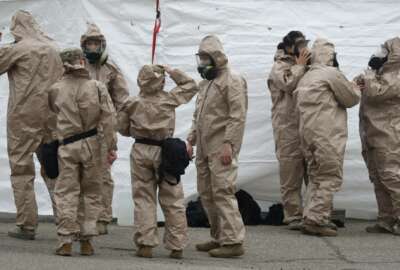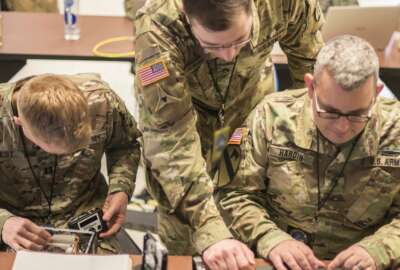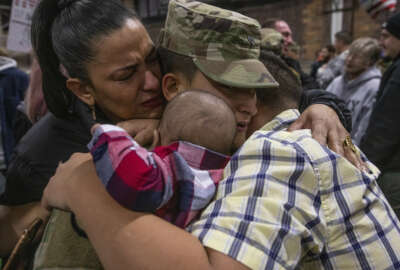
Coronavirus once again brings up issues over National Guard, Title 32
Guardsmen may be missing out on important benefits because of bureaucratic issues.
As National Guard members are being called up in numbers not seen in decades, some advocates say it’s time to settle the title 32 issue once and for all.
Title 32 federally funds National Guard deployments, but keeps troops under the jurisdiction of the individual state governors. Troops also get credit for their GI bill and other benefits.
However, uncertainty over what orders guardsmen are serving under, and how they serve under them, is still causing frustration for the military during the coronavirus outbreak.
“All the orders I’ve seen are going to be capped at 30 days. I think that’s going to be an operational problem,” J. Roy Robinson, president of the National Guard Association of the United States. “It’s going to take more than 30 days for these National Guard members to be in an active status to adequately respond to all the things they are being asked to do for the pandemic response.”
Defense Secretary Mark Esper signed those orders on March 28, and the authorization for title 32 is subject to three conditions:
- The states and territories or FEMA must identify specific requirements for COVID-19 support in accordance with the Stafford Act.
- For requirements originating from the States and territories, these requests must be submitted to FEMA.
- FEMA then provides the Department of Defense with a fully reimbursable mission assignment.
A total of 21 states, three territories and Washington, D.C. are using federal funds and title 32 authority for troops. The other 20 requests, 19 states and one territory, are still going through the approval process.
Robinson said the issues with title 32 go farther than just the length of the orders, which can be increased by Esper, but with a price tag for the federal government. Issues with waiting for title 32 to be invoked can hold back needed benefits.
“There’s a lot of confusion about title 32 authority that allows the National Guard to be mobilized,” Robinson said. “The same thing happened during Hurricane Katrina and I think a lot of people thought they got some of the details figured out, where we wouldn’t have this delay of getting people on board and getting people on orders and here we are going through the same thing again.”
Robinson said one example of the problem during the outbreak is while guardsmen were working, but not yet on title 32 status, if they were to have been infected they could not be treated at a military treatment facility.
Currently there are around 30,000 National Guard troops working in the United States and its territories to respond to coronavirus.
“Over the past few weeks, each day has seen about 1,000 additional soldiers and airmen called up throughout the 54 states, territories and the District of Columbia,” Air Force Gen. Joseph Lengyel, chief of the National Guard Bureau said in a Friday statement.
Response missions by the Guard include: response planners, support to medical testing facilities, response liaisons and support to state emergency operations centers, support to healthcare professionals, logistics support, assisting with disinfecting/cleaning of common public spaces, providing transportation support for health care providers, collecting and delivering samples, and assisting with sample administration.
Copyright © 2025 Federal News Network. All rights reserved. This website is not intended for users located within the European Economic Area.
Scott Maucione is a defense reporter for Federal News Network and reports on human capital, workforce and the Defense Department at-large.
Follow @smaucioneWFED






